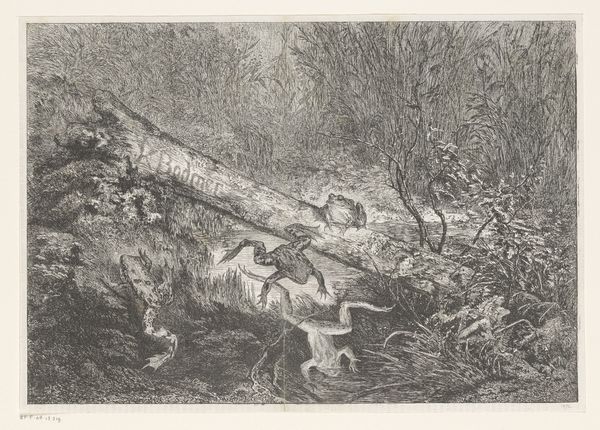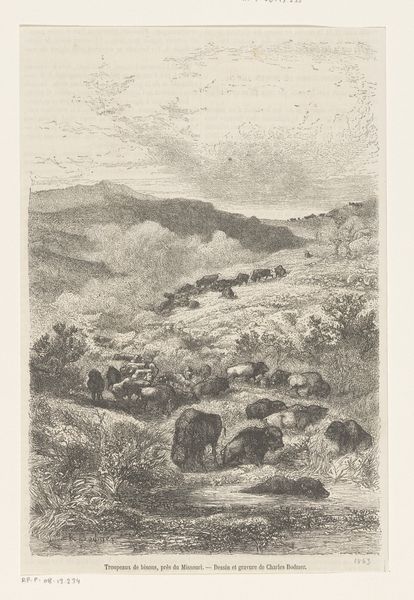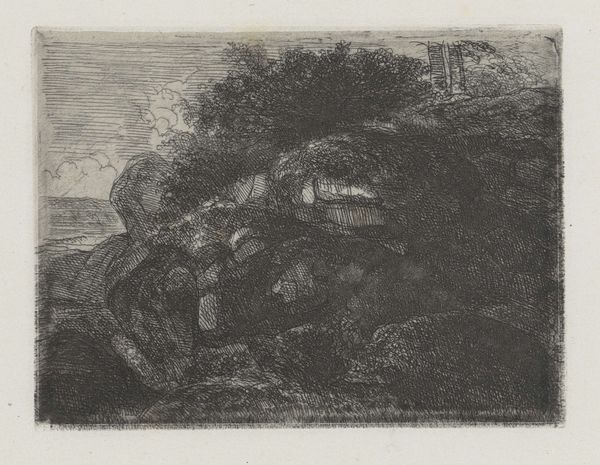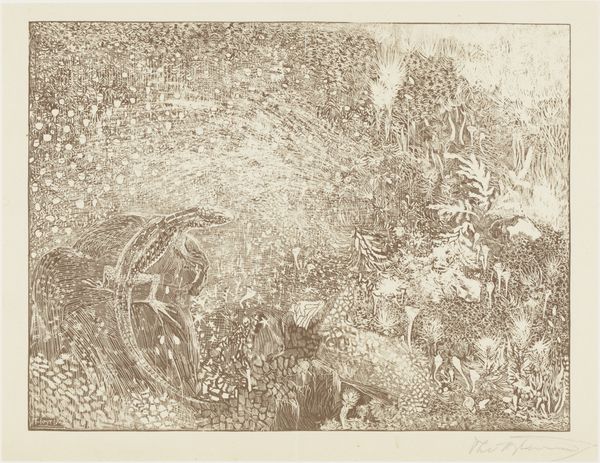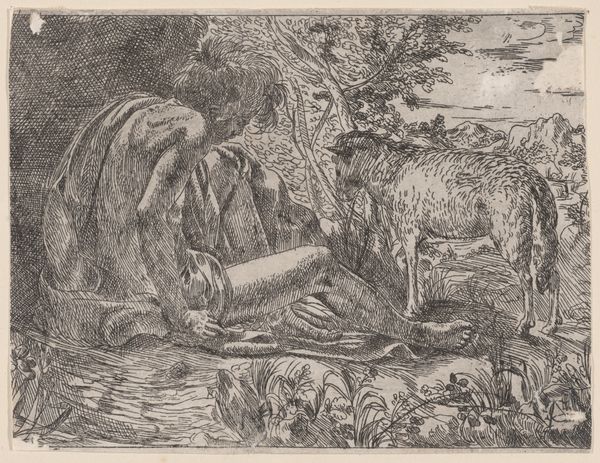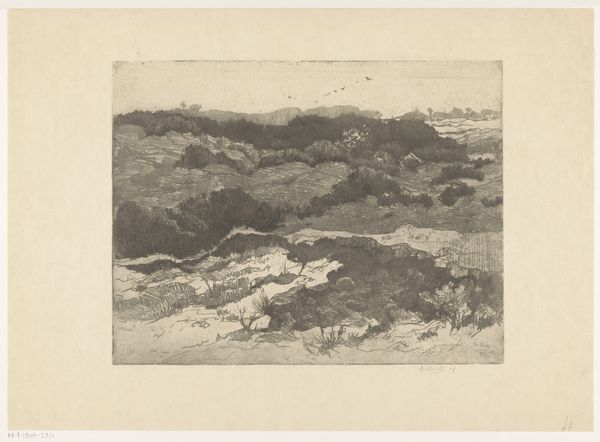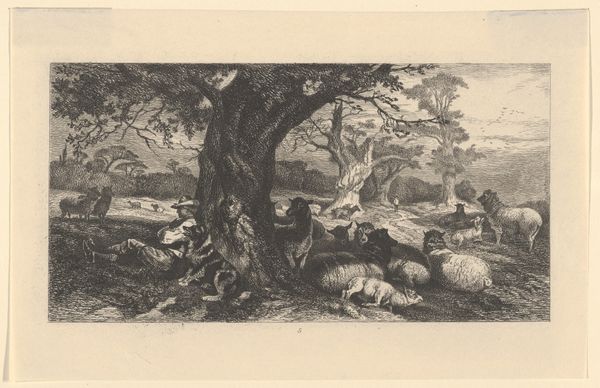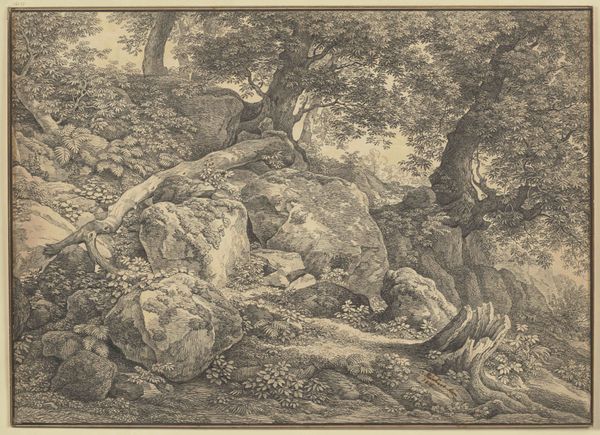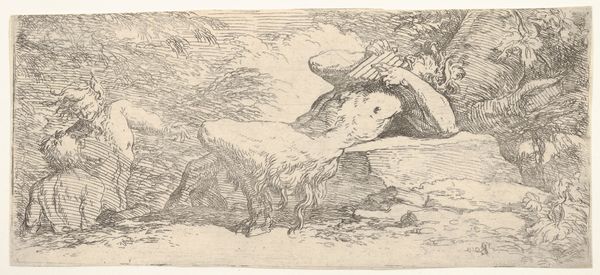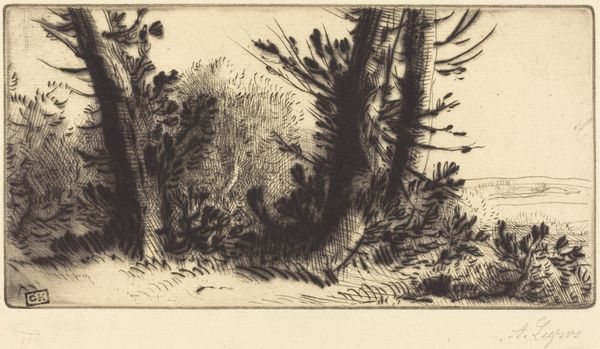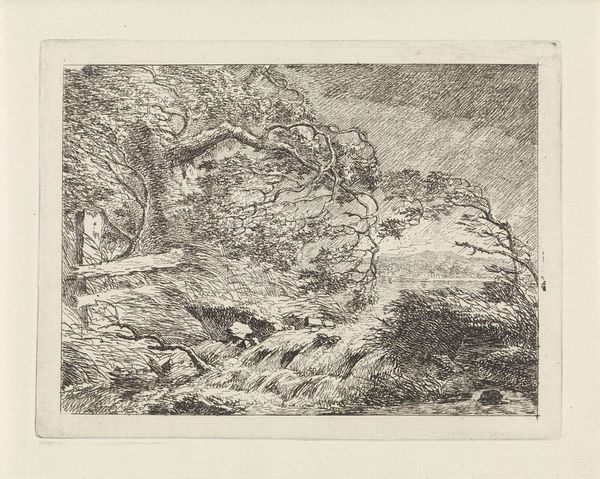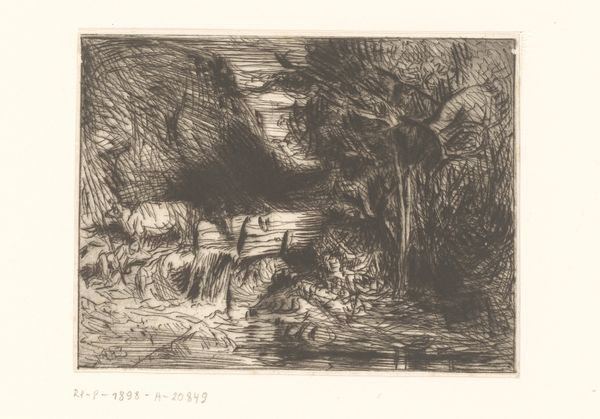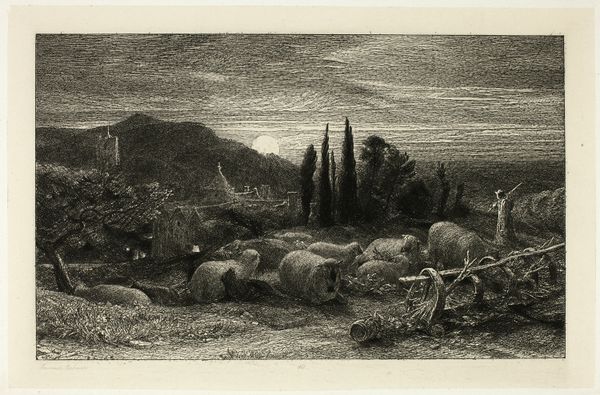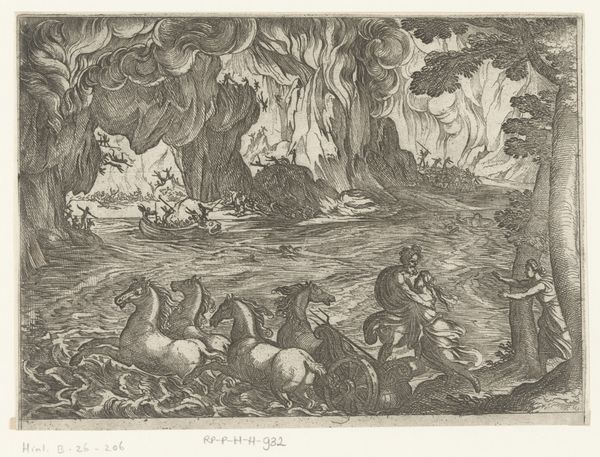
print, etching
#
animal
# print
#
etching
#
old engraving style
#
landscape
#
realism
Dimensions: height 151 mm, width 198 mm
Copyright: Rijks Museum: Open Domain
Editor: We're looking at "Kudde everzwijnen in de regen," or "A drove of wild boars in the rain," an etching by Karl Bodmer, from 1871. It’s quite dark, very textural. You can almost feel the dampness of the scene. What catches your eye? Curator: Immediately I’m drawn to the printmaking process. Look at the labor involved in creating these fine, dense lines. It's an etching, so consider the acid biting into the metal plate, the repeated immersions to achieve that depth of tone. How does this painstaking, industrialized craft contrast with the 'natural' subject it depicts? Editor: That's interesting, I hadn't thought about that contrast. It does seem like a very... manufactured depiction of a natural scene. Why choose etching for such a rustic subject? Curator: Consider the socio-economic context. Etchings like these became widely accessible through mass production. Were these images intended for the rising urban middle class, who had little or no contact with such "wild" nature? The print transforms "wild boar" into a consumable, domesticated object, safe for display. What effect does that have on how we perceive these animals? Editor: So it’s not just about seeing wild boars, but about owning an image of them, domesticating them through art. That’s... bleak. Curator: Is it bleak? Or does it reflect a growing shift in how society viewed its relationship to the natural world? Think about the raw materials required, the labor practices needed to disseminate such images to a wider audience. That consumption is built into the art. How does understanding these conditions of production alter your understanding of Bodmer’s depiction of this specific drove of boars, sheltering in the rain? Editor: I suppose I initially just saw a peaceful scene, but now it seems a lot more complex. It’s a nature scene filtered through a very particular, almost industrial lens. Curator: Precisely. It reminds us that our perceptions of "nature" are never truly unfiltered; they are mediated by material processes and consumption practices.
Comments
No comments
Be the first to comment and join the conversation on the ultimate creative platform.
